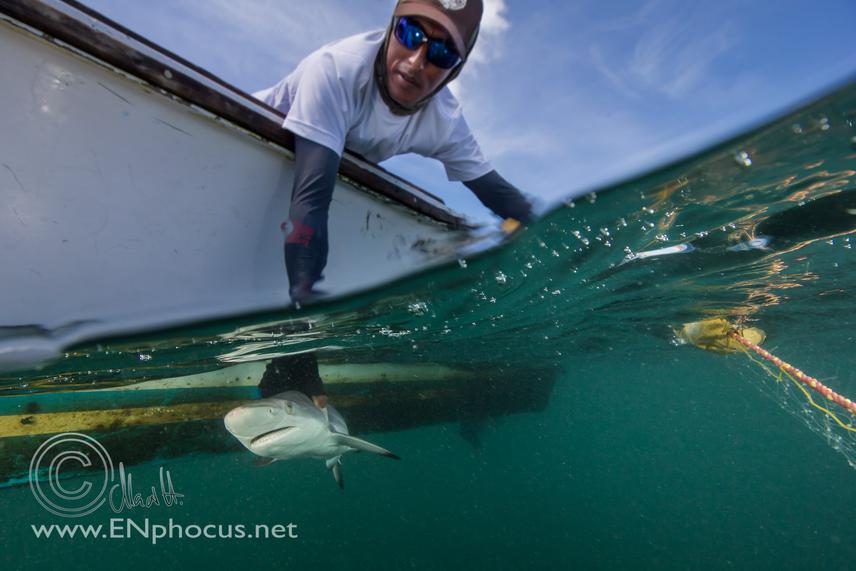Article featuring the project.
Yasuní Chiriboga
Other projects
8 Jan 2020
Evaluating By-Catch Stress Levels Related to Growth and Survivorship of Juvenile Blacktip Sharks in San Cristobal, Galapagos Marine Reserve
Start a long term monitoring program to evaluate the effectiveness of the new zonation scheme, to conserve key nursery areas for C.limbatus sharks.

Getting a shark out of the net and getting it out of the water - La Seca
In 2010-2011 a pilot survey was carried out in San Cristobal Island, Galapagos Marine Reserve, identifying key nursery grounds of blacktip reef sharks.
The importance of comparing the abundance of these sharks after five years encourages our research. The objective of our work is to evaluate the status of the population of neonates and juveniles of Carcharhinus limbatus, and the connectivity between four nursery grounds in the Island, using acoustic telemetry (internal V13 ultrasonic tags) and a receiver array (VEMCO VR2W).
This research will take place in San Cristobal Island, Galapagos Marine Reserve. We will focus at four coastal lagoons at the north-western side (El Seco, Bahia Tortuga, Manglecito, and Puerto Grande), and at an offshore islet known as Kicker Rock. Fieldwork is going to take place from May to September 2016, envisaging two days in April to deploy the acoustic receivers at each of the study sites. Monitoring and tagging of juvenile sharks will be held three days of every month, getting the work done at the five places of interest. Two additional days in September 2016 and May 2017 will be necessary to download data from the receivers. The receivers will stay and be maintained to download data every six months, being part of the long term monitoring strategy. Monitoring activities in the coastal lagoons will have a duration of one hour. Using a net, a part of the team will bring sharks on board. Total length, fork length, weight, and sex will be record, and an internal ultrasonic tag will be placed in the peritoneal cavity, releasing the sharks in the less time possible. In the case of Kicker Rock islet, we will use a laser photogrammetry set up to estimate length. Using barbless baited hooks on hand lines, we will bring sharks alongside the boat where they can be sexed, measured and tagged. Fieldwork is scheduled to take place during the current El Niño Event, which let us evaluate the changes in the population of neonates and juveniles, letting us know how climate change is affecting shark’s nursery grounds in San Cristobal Island.
The main contribution of our work is to start a long term monitoring program to evaluate the effectiveness of the new zonation scheme under development, being the main objective to conserve those key nursery areas for the development of C. limbatus, placed on the Near Threatened category of the IUCN Red List.